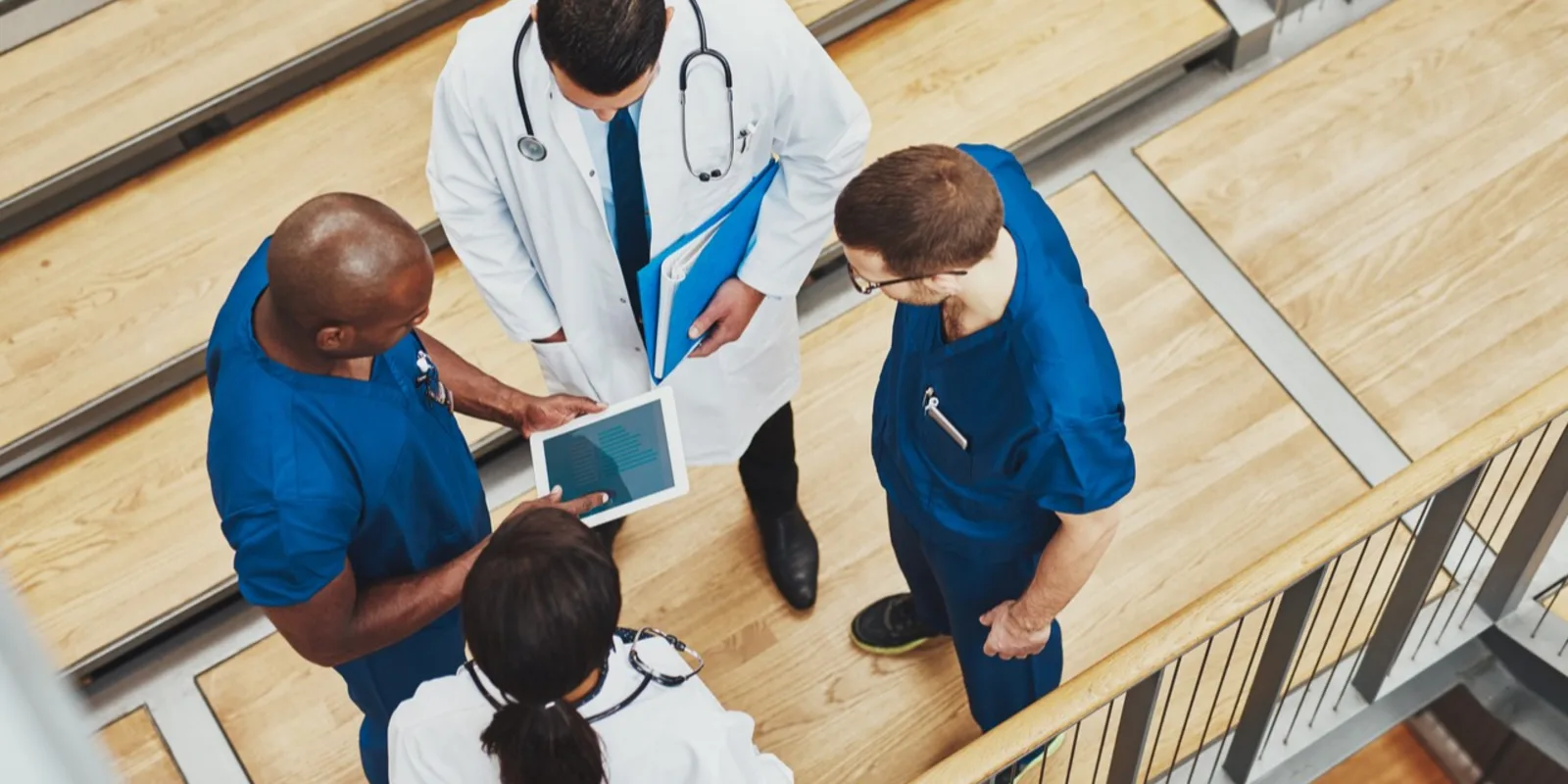
I have a lot of opinions about rounds, usually varying between absolute loathing to begrudging acceptance. During residency, rounds often felt like the dinosaur in the room and demanded everything but contributed nothing. In an age of healthcare transformation, it is worthwhile to assess if rounds are still relevant.
The first rounds were created by William Osler at the Johns Hopkins Hospital, referencing the way that physicians would walk around the wards. Since then, they have evolved to become as diverse as the teams leadings them. Today, many attendings eschew bedside rounds, choosing to cluster outside of each patient’s room instead, or even doing “table” or “card-flip” rounds for every patient in a conference room before venturing out to the floors. Some are team-based, requiring the presence of each patient’s nurse, the care manager, a pharmacist, the respiratory therapist, and a fellow or two. Sometimes the teams are whittled down to the attending and whichever intern has those patients. Some attendings forbid computers-on-wheels while others will bring along their own tablets. Still others see rounds as prime time for teaching and pimping while others purposely take a step back to allow junior physicians to take the lead. Sometimes rounds are isolated to a single floor while others are a tour of the entire hospital, from the deep caves where the radiologists lay to the mysterious psych unit locked behind a triple set of doors. Of all of these iterations, my interns probably would have voted for “discovery” rounds which required no pre-rounding at all, but I’m less certain which model is the best, if any at all.
It is easy to point out the disadvantages of rounds. They waste precious time in the mornings that could be spent making consults or ordering specialized imaging and procedures. They are unnecessarily long and cut into the time for resident teaching conferences. This can be especially true as the rounding team grows bigger — nothing slows down a discussion like the addition of more voices and more concerns, regardless of how valid they may be. Rounds can also feel like a performance since the intern is simply reporting facts on a patient that the attending and senior already know. This is one of the reasons that rounds and pre-rounding could be wildly inefficient. Many attendings must do another set of rounds later in the day since the patient status and important events might change in a single afternoon. And rounds are structured to be redundant — the intern obtains information, the attending might already know that information, the intern reports that information during rounds, the information might also be shared simultaneously or not with other members of the team and the patient. While repetition is a safeguard against medical error, how much redundancy is truly needed? Some enterprising residents might hack the system by combining many steps into one. But that is part of the problem — if a system is already standardized to optimize efficiency and minimize risk, then individual team members would not have to multitask at all. If a hospital were a lean startup, rounds would be first on the chopping block.
But perhaps rounds have lasted so long because they are useful. They are daily, miniature meetings to get the entire team on the same page, to hash out any concerns, and to create the best possible plan of action. They are necessarily slow because medicine is complicated, but patients deserve the best possible care and the best care takes time. Attendings might not have any other time to teach, since the obligations of clinic and administration and research do not slow down for inpatient, and it’s easier to teach (and easier to remember) a clinical pearl that is relevant to the patient sitting in front of you. And while it can be a performance, perhaps that is a skill worth learning. A physician should know how to present information concisely, to create a narrative, to verbalize a thought process and, if needed, to defend how she got there.
I am unsure where I stand, other than EHR should always be used on rounds. Some attendings lament the pre-EHR days when interns were forced to learn their patients so well that they could recite medication lists and every lab value on command. The argument is that this reflects the knowledge and commitment of the resident if they spent the time poring over the chart and soaking in every detail. Theoretically, the better you know your patient the better care you are able to deliver. But this is an outdated exercise — medical care is much more rapid today than ever before, with results come back in under an hour, orders being placed in real time, and the exact timing of medications available — making EHR incredibly useful on rounds. A resident can have a computer or screen in the room and still be able to make eye contact with the patient and talk to them without feeling distracted. And some patients like being shown their imaging or other data from their electronic charts, making them feel more engaged in the decision-making process. For all of its faults, no one can argue that today’s EHR is far superior at storing and presenting patient information than any handwritten note or order ever could.
As for the other aspects of rounds, I remain unconvinced which method is optimal. And maybe that is the best strategy. Maybe physicians should be actively encouraged by leadership to experiment on rounds, to try a new method or even try eliminating them completely. As the healthcare landscape is changing, it would be a disservice to ourselves and to our patients if we didn’t try something new to adapt to those changes. So let’s try new methods, and if one of them works, we should tell others. What fails today could work tomorrow, and what works for one could work for many.







